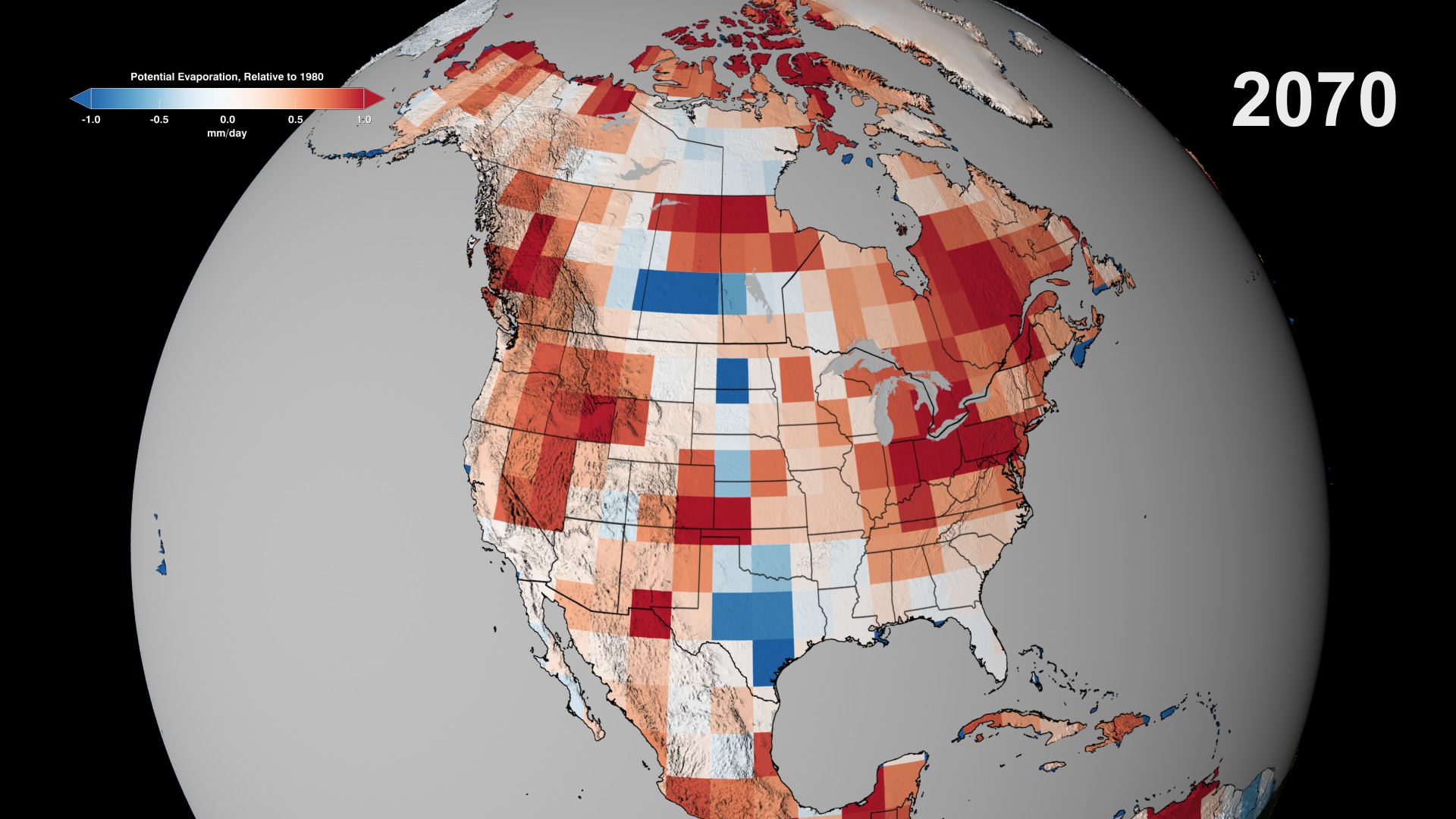Burn Notice
Hot and dry conditions lead to more fires. Those were the findings presented in 2012 by a team of researchers that used NASA satellite data and climate models to predict fire activity in the United States. Now, a new animation shows how dry conditions will cause different parts of the U.S., Canada and Mexico to experience an increased risk of fire by the end of the century. By mapping projected values for a measure of dryness known as the potential evaporation—a calculation that’s based on temperature, rainfall and wind speed estimates—scientists are able to interpret how fire activity will be influenced by future climates. Changes in dryness relative to 1980 levels are shown in the animation using color, where reds represent an increase in dryness and blues represent a decrease. Watch the video to see how dry conditions are expected to spread across North America by the year 2100.

Scientists expect fire risk in the U.S. to escalate by the end of the century.
Regions that are not prone to fires now, such as the Upper Midwest and Great Plains states, will experience a greater risk of fires in the future.

Regions like the western U.S. that experience significant fire activity will be at higher risk by the year 2020.

By 2050, the western U.S., eastern Canada and Yucatan Peninsula show a sharp increase in conditions that promote fire activity.

Dry conditions that can lead to extreme fire events become the new normal by 2100 for places in the U.S., Canada and Mexico that routinely burn.
For More Information
See NASA.gov
Credits
Please give credit for this item to:
NASA's Goddard Space Flight Center
-
Animator
- Trent L. Schindler (USRA)
-
Producers
- Alison Schuyler Ogden (NASA/GSFC)
- Michelle Handleman (USRA)
-
Scientist
- Doug C. Morton (NASA/GSFC)
-
Writer
- Kayvon Sharghi (USRA)
Release date
This page was originally published on Tuesday, August 20, 2013.
This page was last updated on Wednesday, May 3, 2023 at 1:51 PM EDT.
